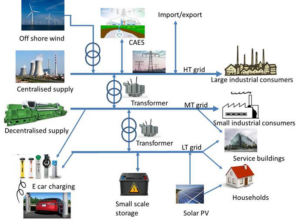Janssen, G.
Publicaties van Janssen, G.
Liquefied hydrogen storage
Hydrogen has to be cooled down below -253°C to become liquefied. Moreover, liquefied hydrogen storage requires expensive (dewar) tanks which are designed to minimize heat transfer from the outside to the liquid, and often additional insulation of the tanks and storage facilities is used. Still, losses due to boil-off of hydrogen are 0.1-0.5% per day. […]
Lees meerCompressed hydrogen storage
Applications are at industrial sites or at H2 filling stations for mobility services. The storage installation consists of a compressor, a rack of storage vessels and an expander, which can be a simple valve. A typical unit consists of a rack of vessels able to store 500 kg or, equivalently, 16.7 MWh of hydrogen. The […]
Lees meer